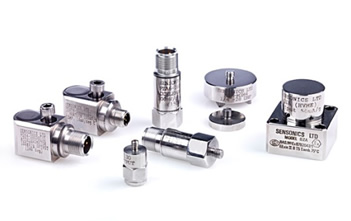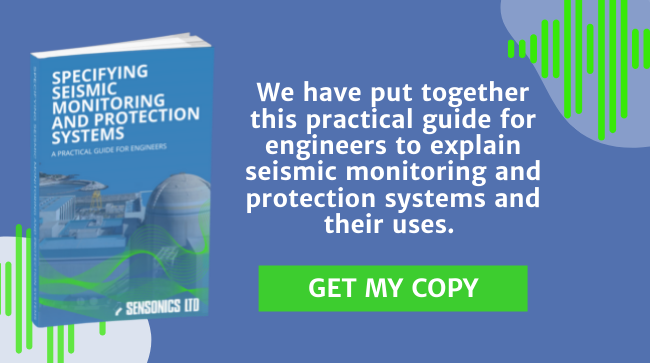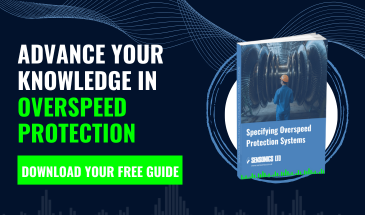What Are The Main Applications For Industrial Sensors?
There are many different types of industrial sensor, used by businesses to relay critical information about a wide range of machinery. Specific sensors are designed to gather real time data on vibration, position, rotational speed, temperature, pressure, force, flow rate, liquid contamination, radiation levels, leakage, and countless other metrics.
For turbines and rotating plant, three of the key measurement areas for which sensors are required: vibration monitoring, position monitoring, and rotational speed monitoring. These are the main measurements covered by the Sensonics range, alongside temperature and pressure. Let’s look at each in turn.
1) Vibration Monitoring
High or increasing in amplitude Vibrations in an industrial or power-generation setting can be bad news for a plant, often indicating that there's a fault and that the machine or process needs to halt shut down immediately. Industrial sensors are therefore crucial to fault detection via vibrations, enabling a series of alarms to be raised or an automatic system shutdown, depending on the severity.
Vibration monitoring via industrial sensors offers a number of advantages, including instantaneous detection and specific location, which can be crucial when you're trying to resolve an issue quickly. As it's a non-invasive form of monitoring, you can set this up as part of a larger sensor monitoring system and allow your operations to continue as normal without manual interference. Vibrations generally increase with the magnitude of the fault, so you can assess the severity of an issue efficiently and prioritise its urgency accordingly.
2) Rotational Speed Monitoring
Monitoring rotational speed through industrial sensors is crucial for specialist industrial equipment, such as turbine rotor shafts for power generation and turbo-pumps. A speed sensor will detect the frequency of targets passing the sensor tip. Targets being suitably sized gear teeth, specially designed stepped ring, key/keyway or target hole and providing electronic pulses to the speed monitoring / machine protection system. Continuous instantaneous speed sensing automatically captures speed deviation and anomalies accordingly, leading to fast fault detection. Most rotary equipment relies on a consistent output and relative speed between components, so an unusual or unexpected change in speed can be automatically controlled in an instant and prevent a catastrophic issue.
Speed sensors can be utilised to provide the following measurements:
- Overspeed Protection: “Overspeed” is a rotational speed that is beyond a turbine’s designed safe operational speed parameters. The rotational speed of a turbine may quickly escalate once it reaches overspeed, generating dangerous levels of centrifugal force that could damage or destroy the machinery unless detection and automated control or shutdown measures are in place.
- Underspeed Detection: “Underspeed” measurements detect when a machine is rotating below its operational speed or is for some unexpected reason slowing down when it shouldn’t be, or for a planned reduction in speed where a process cannot happen at higher speeds.
- Reverse Rotation: These measurements indicate the rotational speed of a machine, most often a pump, in the reverse direction to that which it should be.
- Zero Speed: A confirmation measurement that a shaft is not rotating.
- Speed Measurement: A simple confirmation that a shaft is rotating at a certain speed, for example the “barring” process of a steam turbine before run-up / after run-down from full speed.
- Shaft Speed Control: Bespoke speed controls can be implemented with automated (or manual) adjustment according to the demands of the process. For example, when ramping up the speed of a machine, this can be set a constant rate that avoids known critical speeds where the expected highest vibrations will be apparent, thus causing the least stress on the machine’s bearings, shaft and structure.
3) Position Measurement / Displacement Measurement
Position or displacement measurement sensors (essentially two terms for the same type of device), provide valuable feedback in several applications, including:
- Actuator or valve position feedback
- Casing expansion
- Absolute expansion
- Bearing pedestal movement / turbine crabbing
- Crack monitoring
- Thrust pad wear
- Axial shaft position
- Differential expansion
- Rotor to stator air gap (hydro generators)
- Rod drop / rider band wear (reciprocating compressors)
At Sensonics, we provide a range of Linear Variable Differential Transformer (LVDT) displacement transducers, Eddy Current (EC) proximity probe systems, and Capacitive Air Gap Sensors. Please get in touch for further information.
How Can Speed And Vibration Monitoring Help Your Business?
Efficient monitoring of all types of motion can make your working environment safer, offering more accurate fault detection and a lowered risk of your equipment needing sudden maintenance due to a critical failure. Having your equipment monitored in this way also minimises the risk of financial loss, as with the risk of unscheduled downtime ruled out, you're far less likely to fall behind in your output targets and avoid financial penalties for non-availability.
Speak To Sensonics
When your industrial plant requires sensors for condition monitoring, including the monitoring of vibration, position and of speed, please get in touch with us today. We make sensors for turbines and similar industrial rotating and reciprocating machines globally, and can tailor a condition monitoring system to the needs of your application.



